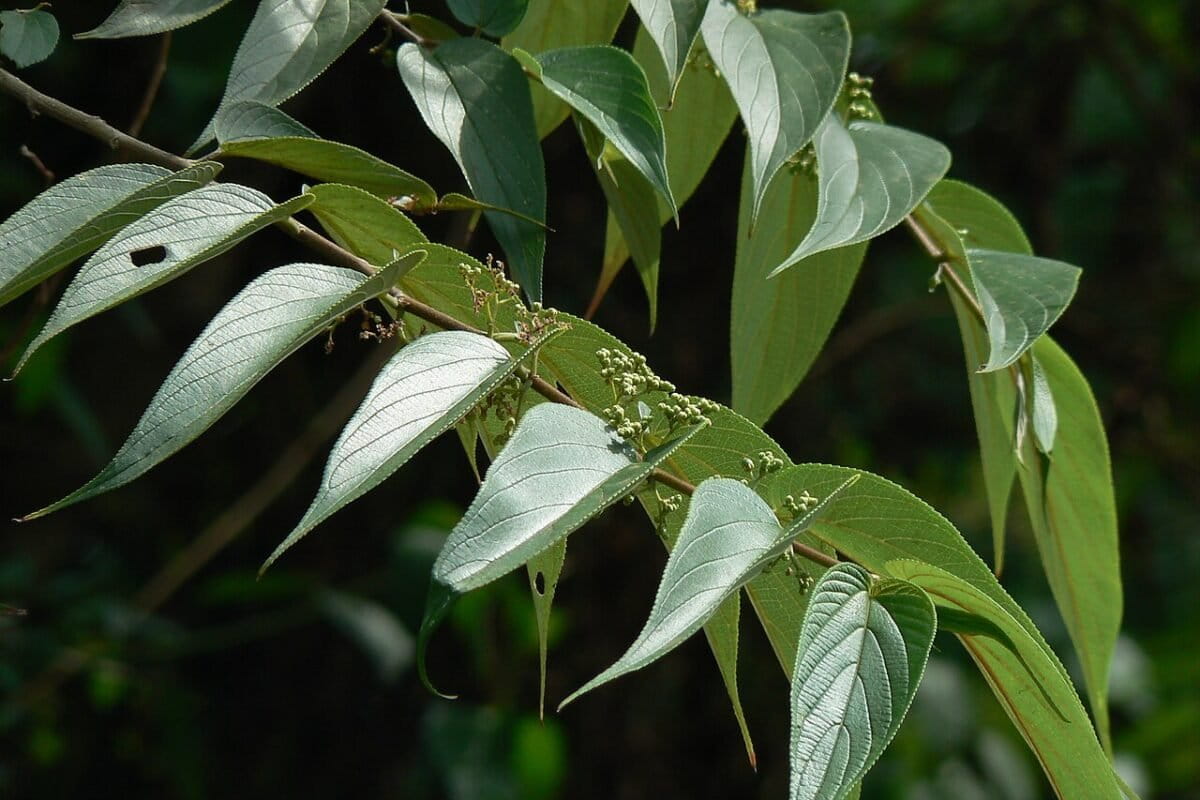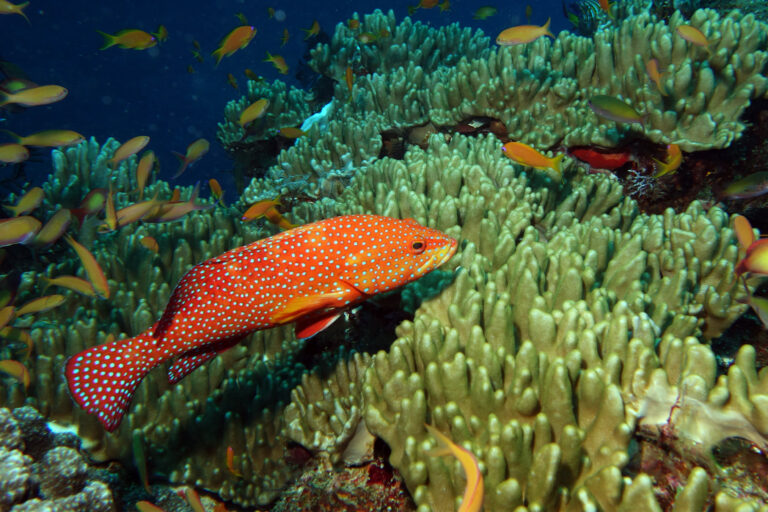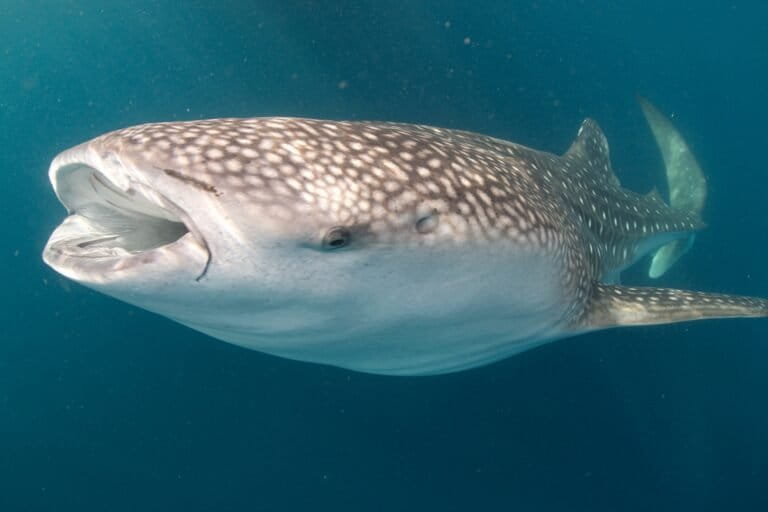- Researchers in Uganda say the country’s only nesting site of critically endangered Rüppell’s vultures is under threat from hunting, charcoal burning and farming.
- Two nesting colonies are built on cliff faces in Luku Central Forest Reserve, in Uganda’s northwestern Arua district.
- The district hosts tens of thousands of people displaced by violent conflict in neighboring Democratic Republic of Congo and South Sudan.
- Many of these refugees, as well as native Ugandans, depend on the reserve to eke out a living, but at great cost to the integrity of its forests and wildlife.
LUKU CENTRAL FOREST RESERVE, Uganda — Ornithologist Ivan Oruka stops suddenly near the foot of a cliff that’s streaked with the telltale whitewash of bird droppings.
He quickly presses his binoculars to his eyes.
Against the clear blue sky, on a bright September morning, at least 29 large birds circle effortlessly above on broad, dark wings.
“Can you see them?” Oruka says. “Observe clearly, see how they move? Can you see that bird is carrying nest construction materials?”
The birds are Rüppell’s vultures (Gyps rueppelli), a critically endangered species, and the cliff is their nesting colony.
Across their former strongholds in West, Central and East Africa, Rüppell’s vulture numbers have declined by more than 90% over the past 40 years or so. Once common across Uganda’s national parks, the birds, whose dark feathers edged with silver give them a handsome scaled appearance, and which also have the reputation for being the world’s highest fliers, are now rarely seen.
Luku Central Forest Reserve, covering just over 4,000 hectares (nearly 10,000 acres) in Uganda’s West Nile region, is an exception. It’s the only place in Uganda where the vultures are known to breed. But for how much longer is uncertain. Luku is under threat, in part due to its location.
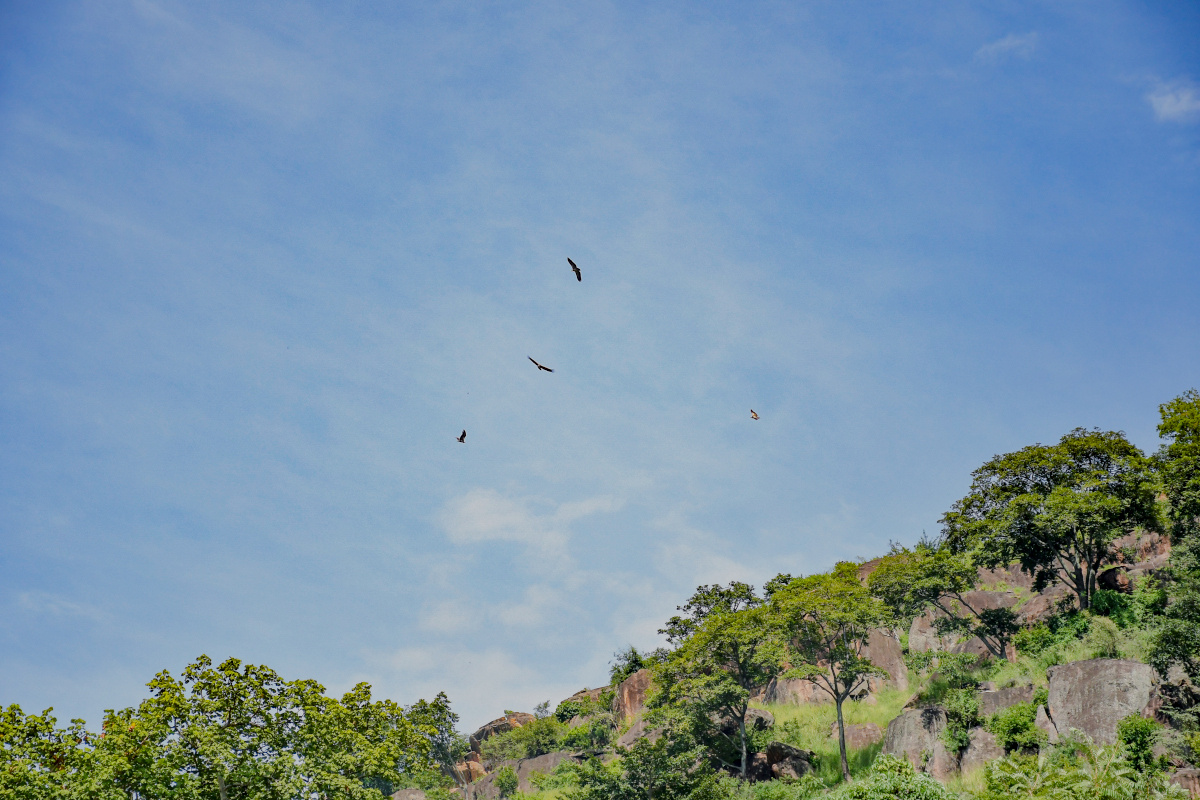
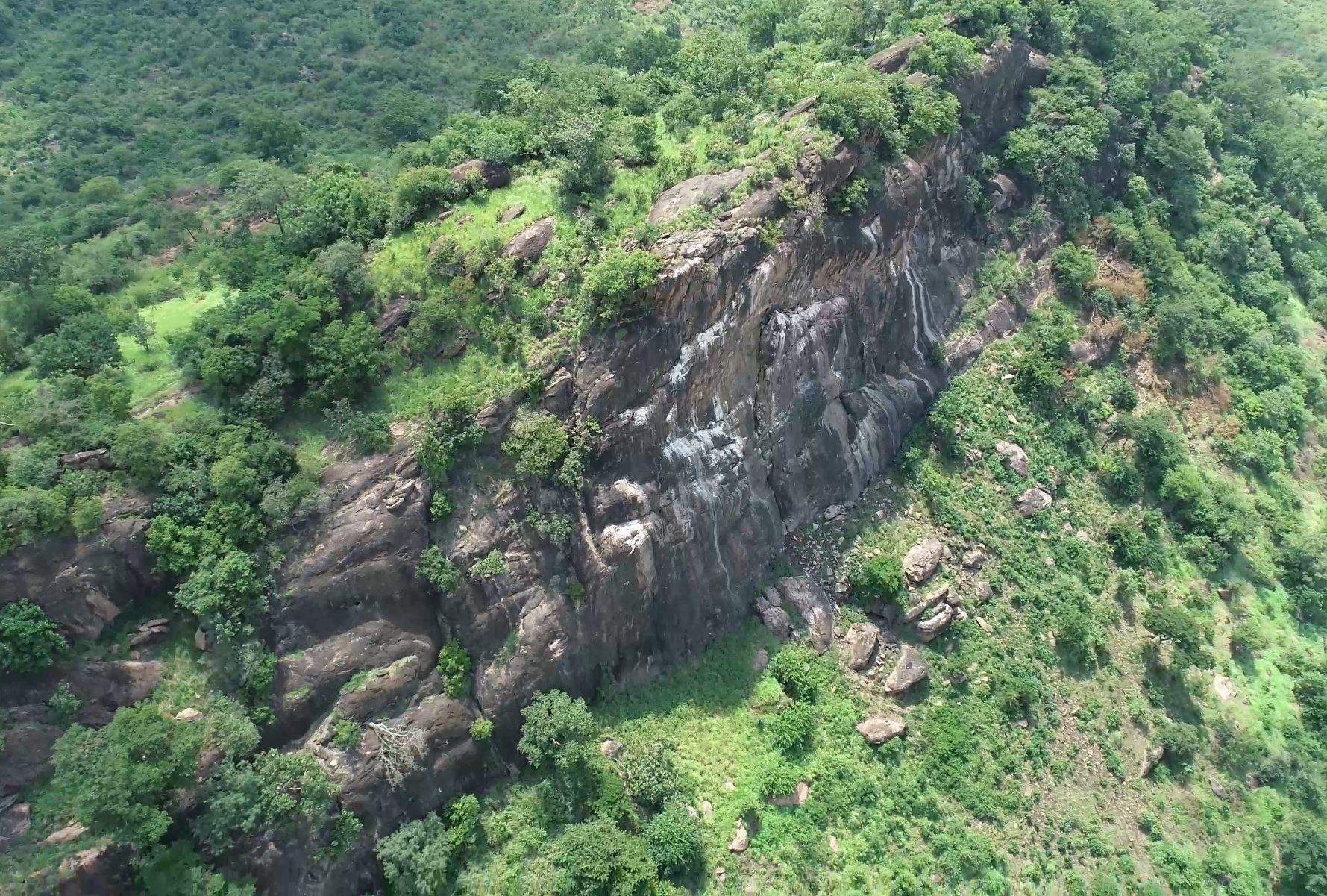
A threatened refuge
Arua district shares its western border with the Democratic Republic of Congo (DRC). Armed conflict has displaced more than 260,000 people from DRC and South Sudan across this frontier into Arua, according to the UNHCR, the United Nations’ refugee agency. Refugees now make up nearly a quarter of the district’s population of more than 800,000 people, and those who have settled near Luku, along with native Ugandans, look to the reserve for a source of livelihood — notably for farming and charcoal production.
On our visit there in late September, Mongabay witnesses large parts of a once-forested landscape transformed into a mosaic of scrub and a few scattered trees.
This is a problem for the vultures. The nesting material that Oruka spotted the vultures with appeared to be from a native hardwood, Antiaris toxicaria, known locally as doro. This tree is less popular with charcoal burners and therefore left standing. But now even these trees are under threat.
“It’s the same tree that the vultures love to roost in,” Oruka adds. “Sometimes we have observed vultures spending the whole night in those trees.”
Angoandia Gopine, a community leader and farmer from the nearby village of Ngolonyako who volunteered to help Oruka with his fieldwork in Luku, has lived his whole life near the forest reserve. He says the spot near the base of the cliff is unrecognizable from the place he knew as a youngster.
“There were some big trees here around the rock,” he says. “But now, you see, all the trees are [cut] down.” He points to a bare patch of ground near where he and Oruka are standing. It’s the site of a former charcoal kiln.
“This is some of the evidence,” he says. “Charcoal burning has become a big project here because people are poor. They don’t know where to [find another source of livelihood to] survive from.”
Local sources tell Mongabay that charcoal produced in Luku, mostly by poorly paid women and children, is shipped to merchants in the nearby town of Arua, and then to markets as far away as Kampala, the capital, around 450 kilometers (280 miles) to the southeast.
“There are old women who go into the forest, walk 5 kilometers [to reach the charcoal kilns], sleep there for two weeks burning charcoal and return with charcoal that is worth 5,000 [Ugandan shillings, less than $2],” Caroline Kansiine, a manager with the National Forestry Authority (NFA), tells Mongabay.
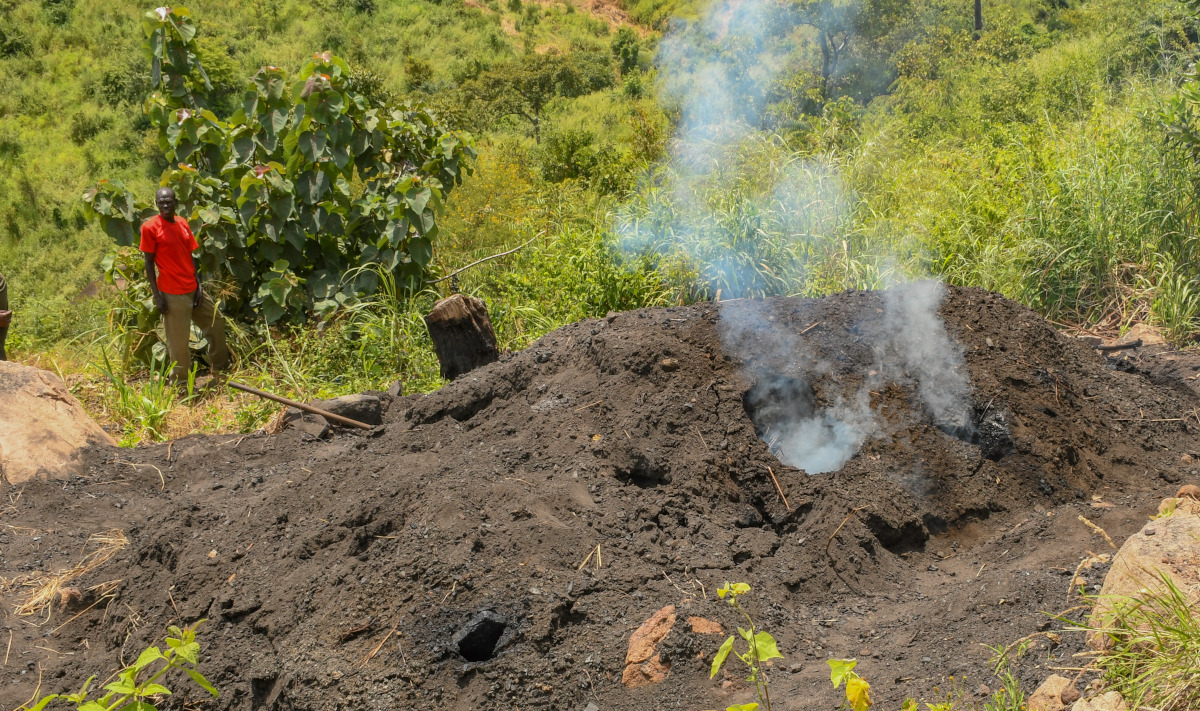
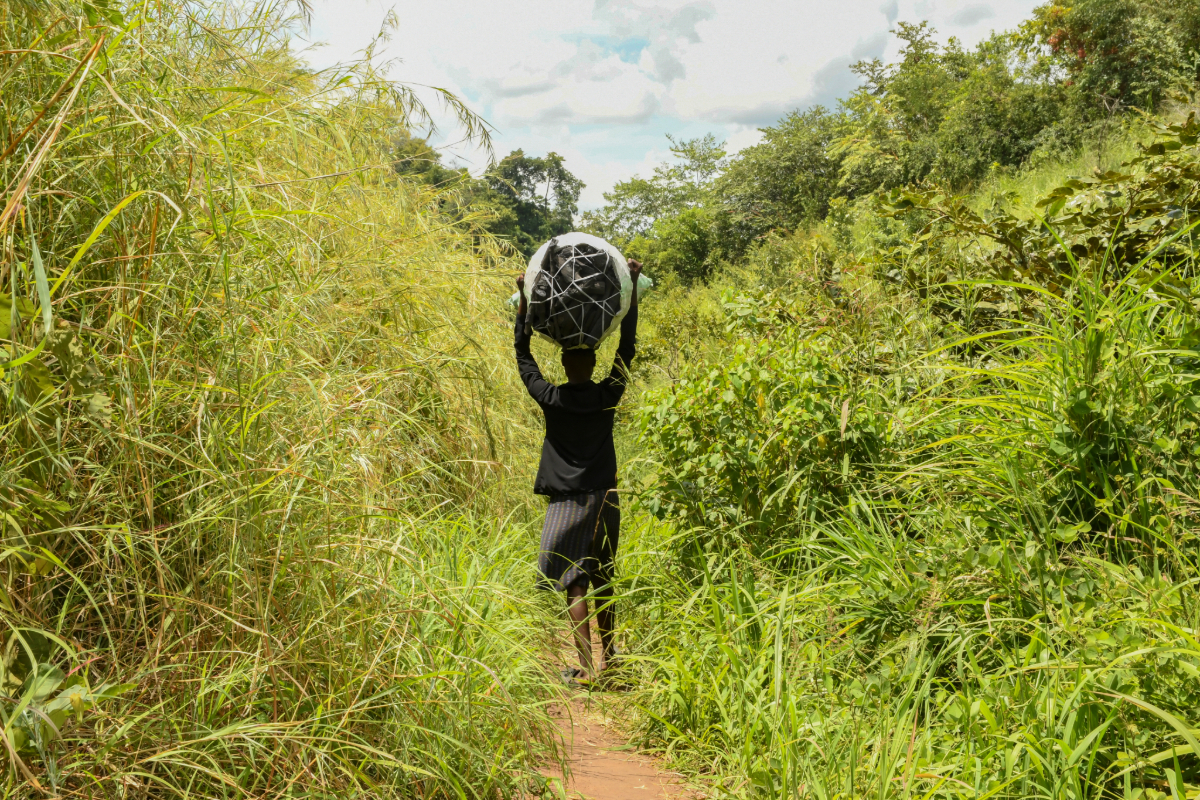
Unwelcome neighbors
The smoke that rises from the kilns near the cliffs also disturbs the vultures, Oruka says.
“The birds are basically smoked out, mostly on the lower ledges,” he says. “[They] resort to flying [off] leaving maybe the young or the eggs in critical stages, uncovered, unincubated, and that affects [their breeding success].”
He and colleagues recently published the first comprehensive study on the Luku nesting colony. Out of 14 nests monitored from 2023-2024, only eight successfully raised a chick — a breeding success rate of just 57%. This year was only marginally better.
Figures on Rüppell’s vultures’ breeding success elsewhere are scarce, though one record from a nesting colony in Tanzania’s Serengeti region in 1970 detailed an 82% success rate, even though food supplies that year were poor. And similar cliff-nesting griffon vultures (Gyps fulvus) at undisturbed sites in Europe raise around 75% of their chicks.
The disturbances from charcoal-burning in Luku aren’t the only human-induced impacts the birds are facing.
The proliferation of farms and settlements in and around the reserve has triggered an influx of what scientists call synanthropic species — wild animals like olive baboons (Papio anubis), vervet monkeys (Chlorocebus pygerythrus) and pied crows (Corvus albus) that flourish in the presence of people but present new threats to vultures.
Farmers frequently poison baboons for stealing maize and beans, or for killing chickens and calves, which can be deadly for vultures that feed on baboon carcasses. And pied crows, which are known to rob vulture nests, chase brooding vultures from their nests, exposing their chicks and eggs.
Rüppell’s vultures only raise one chick per year, so any loss is a heavy blow.
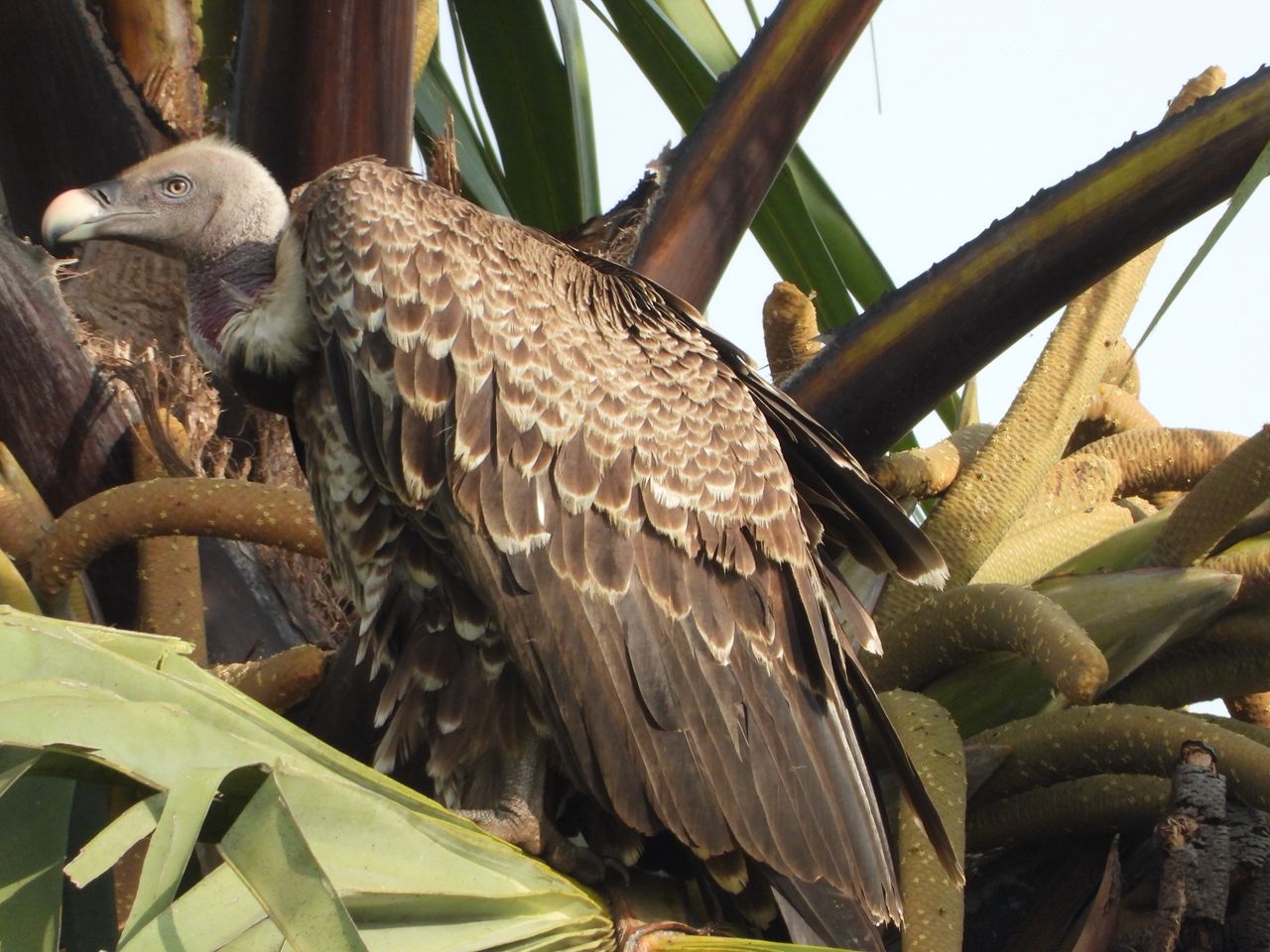
Protecting the forest
Local officials say poor relations between forestry officials and community members means laws to safeguard Luku aren’t regularly enforced.
“Ideally we are supposed to do enforcement monthly but we don’t have manpower,” says Hannington Adroonzi, a senior district environmental officer.
Even when enforcement is done, it can be dangerous because of the heightened tensions.
“You don’t move alone,” Adroonzi says, citing the risk of confronting illegal wood harvesters in possession of axes and machetes. “If you go there alone, without force, if you meet such people, they can kill you.”
John Wagida, vice chair for Ajia subcounty, a local administrative area located near the boundary of Luku, confirms that numbers of Rüppell’s vultures, known in the local Lugbara language as roko, have declined markedly since he was young.
“Currently, they are hardly seen unless you take time to go to Rokoze,” he said, using the Lugbara name for the rocky places where vultures nest.
Wagida suggests mounting a massive awareness campaign to highlight the threats facing the vultures and encourage locals to stop burning and clearing the forest.
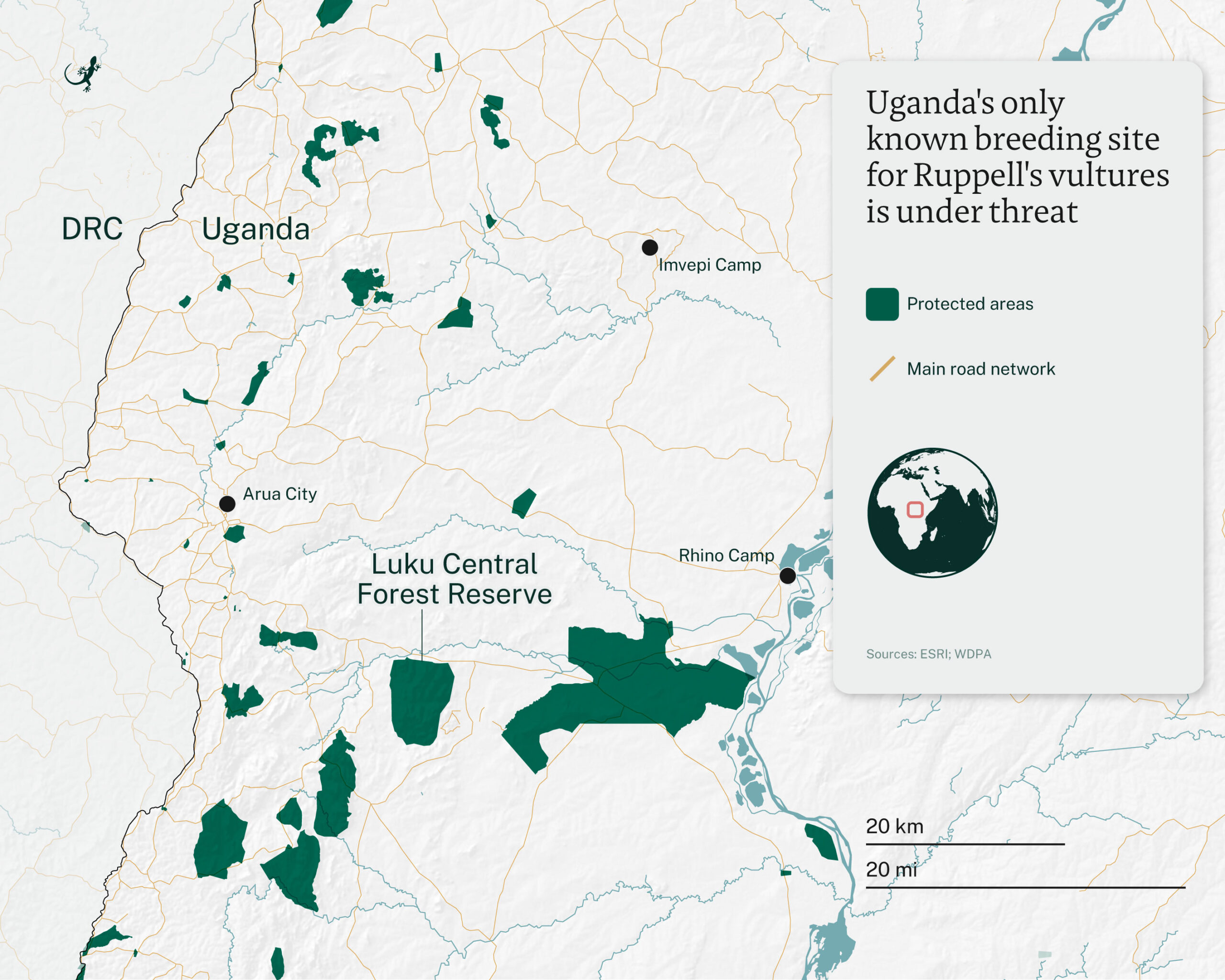
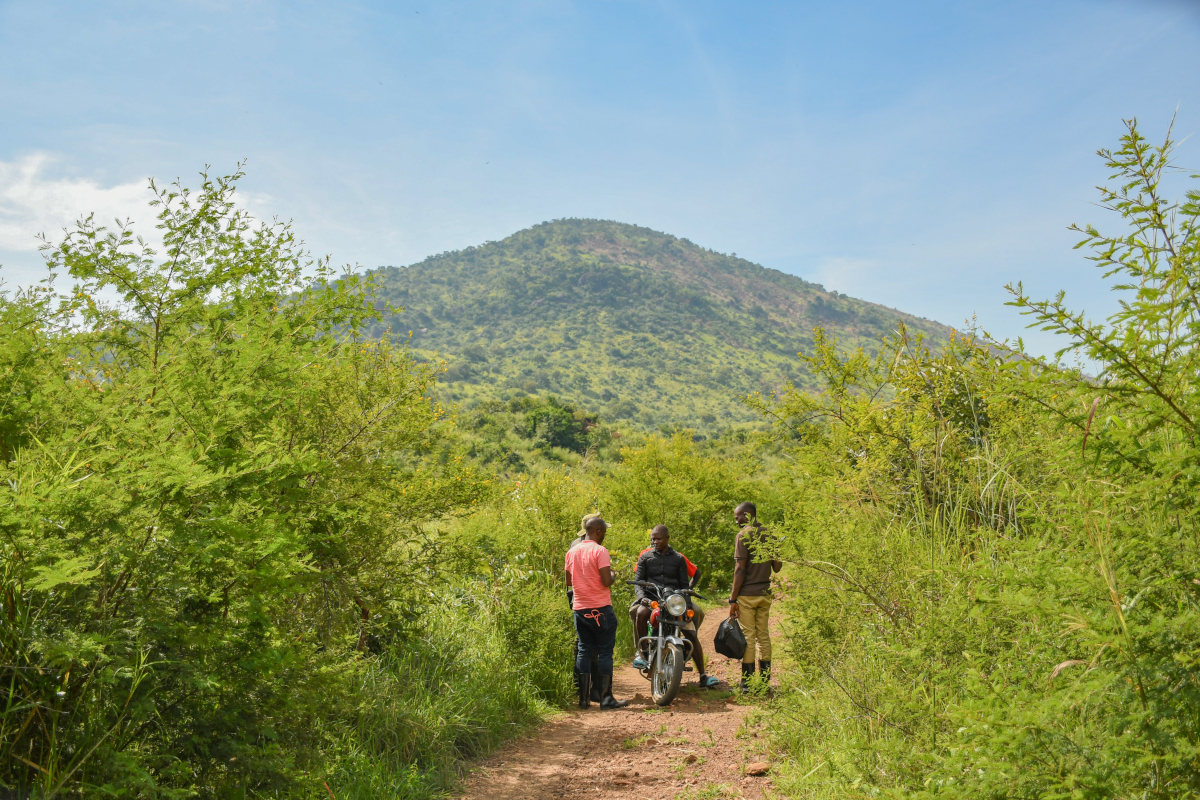
Opportunist hunting
Back inside the reserve, Mongabay accompanies Oruka to a second nesting cliff comprising around 60 pairs of vultures that he’s only recently documented. It’s around an hour, by car and by foot, from the first site. A charcoal kiln smolders about 20 meters (66 feet) from the base of the cliff, and a well-worn path, made by woodcutters, snakes its way up the side of the hill.
Freshly built vulture nests are visible on the cliff ledges, but no eggs have yet been laid.
At the top of the cliff, Oruka stoops to pick up some dung — small, bean-sized pellets. These are the droppings of rock hyraxes (Procavia capensis), small, stout, short-legged herbivores distantly related to elephants that are targeted by hunters, including some who cross the border from the DRC with their dogs. If they don’t find hyraxes, the hunters often take vulture chicks and eggs.
“People told me how they crushed [the vulture] bones and their feathers for belief-based uses, including their eggs,” Oruka says. “The eggs and the vulture itself — they have a strong market in Congo.”
Kansiine, the NFA official, says a strategy to promote collaborative forest management between members of the community and her agency might be needed.
“When they know [the forest] is very important [for wildlife like vultures], they can change their behavior,” she says. “If the community left them, [Luku’s native trees] can regenerate and grow.”
But offering alternative livelihoods to this hard-pressed community is also crucial. Many people in Arua look to the forest as their only source of income, she says, and right now there’s no political will to change this.
“You arrest people who burn charcoal, you take them to the police, politicians remove them quickly [from custody],” she says. “They don’t want their voters arrested.”
Banner image: Rüppell’s vultures pictured in Kenya’s Masai Mara — these endangered birds raise only one chick per year. Image by Thomas Fuhrmann via Wikimedia (CC BY-SA 4.0)
Hooded vultures in Ghana and South Africa on the brink, study says
Action plan to save West African vultures targets threat from belief-based use
Citation:
Oruka, I., Malinga, G. M., Kato, S. S., Ogada, D., & Pomeroy, D. (2025). Breeding dynamics and threats identified at a small colony of critically endangered Rüppell’s vultures Gyps rueppellii in a Ugandan forest reserve. Ostrich, 96(2), 123-130. doi:10.2989/00306525.2025.2540269
FEEDBACK: Use this form to send a message to the author of this post. If you want to post a public comment, you can do that at the bottom of the page.





